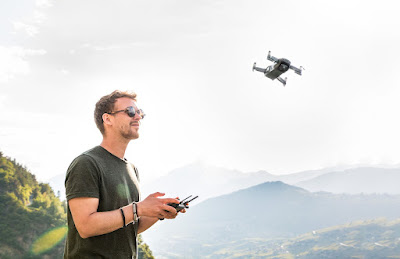Definition of Drone:
 |
| Definition of Drone |
The word definition of drone used to refer to male bees, but today it refers to an entire class of flying machines that includes everything from commercial aircraft to your next delivery from Amazon. But what are drones? Where did they come from? Are they only used by the military? Read on to learn more about these controversial machines, and how they fit into our modern world!
A brief history of drones:
The origins of unmanned aerial vehicles (UAVs) or definition of drone reach back to 1849 when Austrian artillery officer Friedrich von Hecker successfully flew his unmanned balloon in Vienna. Von Hecker’s work is considered to be the first heavier-than-air man-carrying aircraft in history. So while that term may only be 100 years old, UAVs have existed for nearly two centuries although they certainly haven’t always been considered useful or worth their weight. In fact, during World War I, German soldiers used bags filled with feathers tied to sticks as mock-up unmanned aerial vehicles; it was in 1917 that actual kites were first used by the United States Army Signal Corps for reconnaissance and artillery spotting missions during combat operations.
The law and your rights:
It’s important to know that definition of drone (unmanned aerial vehicles, or UAVs) have very little legal standing as they currently exist. But it’s a good bet that will change quickly in the near future. In fact, until recently there were a total of eight states with anti-drone laws on their books. As of last year, though, more than 37 states have either passed legislation related to drones or announced they intend to do so soon. These laws govern everything from how law enforcement can use drones to how you’re allowed to spy on your neighbors with them (for fun).
How drones fly:
 |
| drones fly |
If you’re looking definition of drone, weigh your options carefully. The cost of drones ranges from around $50 up to thousands of dollars. The more expensive options include features such as aerial photography and delivery services, but at those prices, it’s hard to know whether or not you’ll ever recoup your investment. Before buying, research any local laws related to drones; for example, if your drone is too big or loud, it may be illegal to fly in certain areas. Once you have a model in mind and have ensured that it is legal for you to fly it where you live, head outside and give it a whirl!
Types of drones:
First, let’s take a look at some of your options when it comes to buying a drone. There are four different types of definition of drone based on size and functionality, so you can choose one that best fits your needs. From there, we can explore each type more specifically. These include fixed-wing aircraft, rotary-wing aircraft, multirotor copters, and fixed-wing copters. Fixed-wing aircraft are fixed wings that have landing gear for takeoff and landing. They typically have higher speeds than rotary-wing aircraft because they don’t need to hover like helicopters do; however, they also tend to be larger in size because of their increased weight from carrying engines.
Why you should buy a drone:
Drones are nothing new, and today, they come in a variety of shapes and sizes. Many drones, like quadcopters or multirotor, can be flown manually but there’s a growing number of automated options on offer too. In fact, some manufacturers (like Qualcomm) think that automated drones could one day replace cars entirely. Some also think that definition of drone will one day deliver our packages (think Amazon), while others believe that they’ll be used to monitor farms or even police departments. But while many drones do have merit, they shouldn’t all be lumped together into one category; whether or not you should buy your own drone really depends on your use case and it isn’t always clear-cut.
